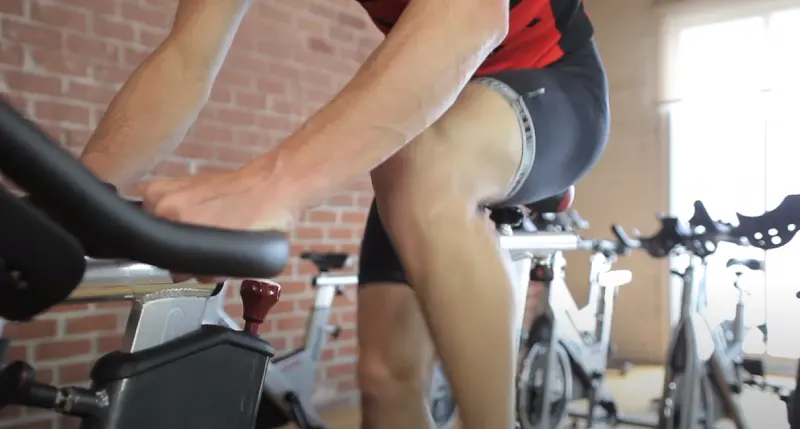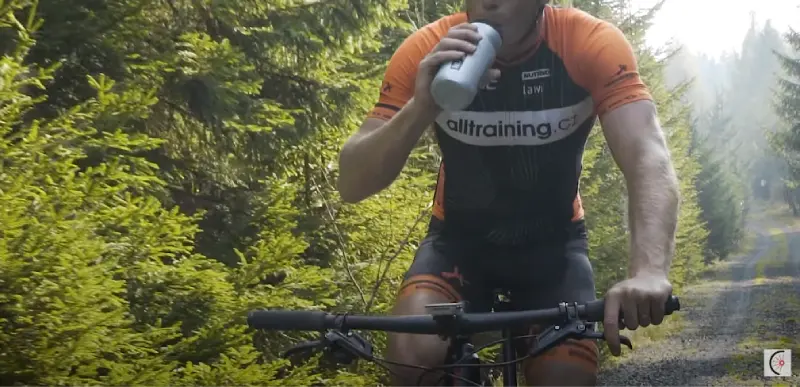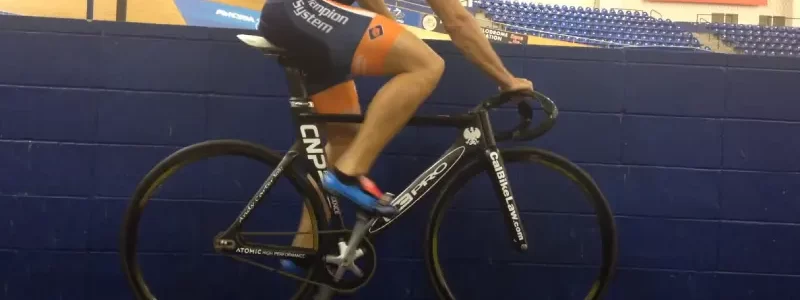Cycling is a great way to improve your endurance muscle fibers, which are resistant to fatigue but not prone to bulk up. By cycling, you can sculpt your muscles fast and target your quads, glutes, hamstrings, and calves, improving your leg strength and endurance.
It is possible to build muscle mass in your legs when cycling, but the amount of muscle growth you experience depends on the type and intensity of your cycling workouts.
A recent study has shown that men and women who took part in a challenging cycling workout three times a week for 12 weeks, including just four minutes of high-intensity cycling per week, experienced significant increases in leg muscle size and stamina.
In this blog post, we will explore the best ways to build mass in your legs through cycling and provide some precautions to take when cycling to avoid putting too much strain on your legs.
Can Cycling Put Mass On Legs? 8 Key Fitness Insights

While cycling works out several muscle groups, it is effective at building leg muscle because of the repetitive motion of pedaling. Some specific techniques and strategies can help maximize your efforts at building leg muscle while cycling.
Ride Uphill
Riding uphill is an incredibly effective exercise for building leg muscles. Riding uphill requires your muscles to work extra hard to pedal through the resistance. This helps you build strength and endurance as you push through rugged terrain.
Stand Up to Pedal
Stand up and pedal when you’re riding uphill or need to generate more power. By doing so, you can put more pressure on your pedals and use your body weight to drive the pedals. This puts more stress on your leg muscles and aids in the development of leg muscles.
Monitor Your Cadence
Your cadence, the number of pedal turns per minute, is crucial in building leg muscles. Higher cadences put more stress on your cardiovascular system, while lower rhythms exert more force on your muscles. Therefore, it’s imperative to maintain a balance between the two while cycling.
Get off Your Seat
Getting off your seat and using the bike with a standing posture is an excellent way to target new muscles. Keep your pedals at a constant velocity, and when you’re pedaling on level ground, change your stance and use standing original positions to work out the muscle groups in your legs.
Slow Your Pedaling Down
Slowing your pedaling down might seem counterintuitive in building leg muscles, but it helps. Reducing your pedal speed or cadence increases the force required to pedal. More stress puts more strain on the strengths and, as a result, strengthens them.
Cycling Put Mass on Legs: 6 Factors to Consider
Cycling can be an excellent option to gain mass in your lower body. When done correctly, cycling will help you build muscle in your legs while improving your cardiovascular health. Here are some considerations to take when cycling for leg mass.
Warm-Up and Cool Down
Before starting your cycling session, do a proper warm-up to prepare your body for exercise. This can include light jogging or stretching to get your muscles ready. After your workout, take the time to cool down with some stretching to prevent muscle soreness.
Correct Bike Setup
Your bike should be adjusted to fit your body correctly to prevent unwanted strain or injury. Adjust your seat height and handlebar position to ensure correct posture and alignment.
Gradual Increase in Intensity
If you’re just starting, you’ll want to increase your intensity slowly to prevent unnecessary muscle strain or injury. Start with shorter rides at lower intensities and progressively increase your distance and power as your fitness improves.
Hydration and Nutrition

Cycling can be a high-intensity workout that can lead to dehydration. Drink plenty of water before, during, and after your ride. A balanced diet with enough protein can support muscle growth.
Regular Rest
Rest days are just as important as workout days regarding muscle growth. Your muscles will benefit from rest days, so they have the time to recover and rebuild.
Cross-Training
Weightlifting or resistance training exercises can effectively fortify your leg muscles, enhancing cycling performance.
Different Strategies For Putting Muscle On Legs Through Cycling
Dealing with leg pain, especially when it’s severe or occurs at night, can significantly affect your quality of life. Here are strategies addressing different causes and types of leg pain, including immediate relief methods, managing nerve and bone pain, and understanding the role of hydration.
Immediate Relief
- Rest: Avoid activities that aggravate the pain and give your legs a chance to rest.
- Elevation: Elevate your legs to reduce swelling and improve circulation.
- Ice: Apply ice packs wrapped in a cloth to the affected area for 15-20 minutes to reduce inflammation and numb the pain.
Nighttime Relief
- Proper Sleep Position: Use pillows to support your legs and maintain a comfortable sleep position.
- Warm Bath: Soaking in a warm bath before bed can help relax muscles and alleviate pain.
- Gentle Stretching: Perform gentle stretches to loosen tight muscles before bedtime.
Nerve Pain Relief
- Over-the-counter Pain Relievers: Nonsteroidal anti-inflammatory drugs (NSAIDs) like ibuprofen can help reduce nerve pain and inflammation.
- Heat Therapy: Apply a warm compress or heating pad to the affected area to help relax muscles and ease nerve pain.
Lower Leg Pain Relief
- Compression: Wear compression stockings or wraps to improve circulation and reduce swelling.
- Massage: Gentle massage can help alleviate muscle tension and improve blood flow to the lower legs.
Dehydration and Leg Pain
- Hydration: Dehydration can lead to muscle cramps and leg pain, so drink plenty of water throughout the day to stay hydrated.
Bone Pain Relief
- Calcium and Vitamin D: Ensure you get enough calcium and vitamin D to support bone health.
- Gentle Exercise: Low-impact exercises like walking or swimming can help strengthen bones and ease bone pain.
Conclusion
Cycling is an effective way to tone and strengthen your lower body muscles. However, it doesn’t add significant weight or mass to your legs.
It is a fun and low-affected activity that contributes to a healthy lifestyle. So, cycling may be the perfect exercise to tone your legs.
Muscle mass is your big goal. You may need resistance training. Always consult a professional fitness trainer to guide you in selecting the right exercises that best align with your fitness goals.
FAQs
Can A Broken Toe Cause Leg Pain?
Yes, a broken toe can lead to leg pain because of the interconnected nature of muscles and nerves. Pain can radiate up the leg, mainly if swelling or injury affects nearby nerves.
How Often Should I Cycle to See Results In My Leg Muscle Mass?
The frequency of your cycling sessions depends on your fitness level and cycling goals. For beginners, 2-3 sessions per week of moderate to high-intensity cycling can yield noticeable results in leg muscle mass within a few weeks. Consistency and proper nutrition are crucial to maximizing your gains from cycling.
Can Cycling Cause Bulky or Overly Muscular Legs?
No, cycling alone is unlikely to make your legs bulky or overly muscular. The resistance and endurance training from cycling can improve your leg muscle mass, but it is proportional to your body type and exercise regimen. To avoid bulky legs, focus on balanced, low-affected training and nutrition rather than excessive cycling or weight training.


